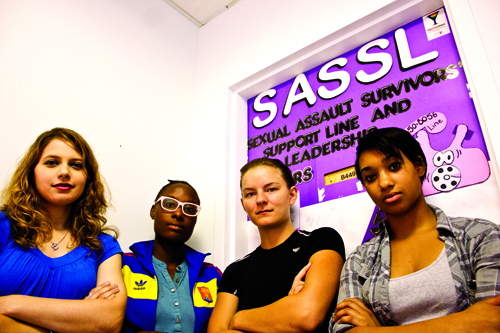SASSL representative says sexual assault safety tips, such as walking in well-lit, high-traffic areas, are not enough
Leslie Armstrong
Editor-in-Chief

Mirella Bolohan, a representative from York’s Sexual Assault Survivor’s Support Line and Leadership (SASSL) organization, spoke out against the York administration’s tactics for staying safe on campus, calling their security bulletin tips, such as walking in well-lit, high-traffic areas, “false safety.”
“Assaults don’t only happen in secluded areas at night,” says Bolohan. “They happen in lecture halls, in washrooms.”
SASSL statistics show that 49 per cent of sexual assaults occur in broad daylight, and 80 per cent occur in the family.
The administration’s short-term solutions to the problem of sexual assault on campus fail to address what appears to be a bigger issue on campus: the lingering mindset that victims of sexual assault are at fault, Bolohan says.
“People don’t believe the mindset can change,” she says. “The problem can be addressed if the administration spreads
the message.”
However, Joanne Rider of York media says the university is taking many different initiatives to change the way sexual assault is addressed on campus.
“The safety of York University students, faculty, and staff is our top priority,” she says. “York University takes a zero tolerance stance on any type of unwanted activity and takes seriously any such occurrence, particularly sexual assault.”
Rider says initiatives this year aimed at changing the way the York community thinks about sexual assault include the “Can I Kiss You” session about sexual consent, targeted at first-year students during Frosh week, which is now in its third year; the introduction of a safety initiatives coordinator who works to engage students, staff, and faculty on campus in safety measures; the introduction of a representative for the Respect Inclusivity Awareness (RIAT) program by the Centre for Human Rights; and, of course, the safety bulletins posted around campus.
But students on campus are skeptical of the administration’s actions against sexual assault on campus, particularly the effectiveness of the safety bulletins.
Nina Nguyen, a third-year nursing student, says the bulletins regurgitate common-knowledge tips like ‘being aware of your surroundings.’ “It’s helpful for those who don’t have common sense,” she says.
Third-year theatre and women’s studies double major Emma Rose MacDonald attributes the root cause of the recurring assaults on campus to misogyny.
“It’s a larger societal issue than just on campus,” she says. “I’d love to see more measures taken, more work than, ‘violence isn’t okay.’ Violence is definitely connected to questions of masculinity.”
As for working solutions, SASSL is confident in word-of-mouth and communication of progressive paradigms as a way of combatting the mindset of victim-blaming surrounding sexual assault.
“Whenever we hear [stories in the media about sexual assault],” says Bolohan, “we say it to as many people as possible.”


